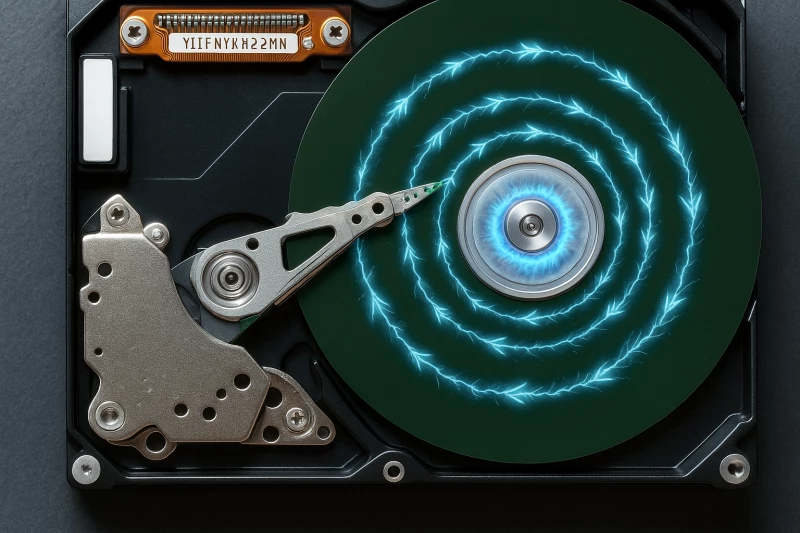New “P-Wave” Magnetism Opens the Door to Ultrafast, Energy-Efficient Spintronic Memory
Published on Quantum Server Networks | June 2025

In a groundbreaking study that could shape the future of computing and materials science, a team of researchers at the Massachusetts Institute of Technology (MIT) has discovered a new type of magnetism—dubbed p-wave magnetism—in a crystalline compound of nickel iodide (NiI2). This unique magnetic state holds promise for the development of next-generation spintronic memory devices that are faster, more energy-efficient, and dramatically cooler in operation than current semiconductor-based technologies.
🔗 Original article on New Atlas
What Is P-Wave Magnetism and Why Does It Matter?
Most people are familiar with ferromagnets—materials like iron where all the atomic spins align in the same direction, producing a strong magnetic field. In contrast, antiferromagnets have alternating spin directions that cancel out overall magnetization.
In this MIT study, researchers observed a radically different magnetic arrangement: spiral spin ordering. In a thin, single-crystal sheet of NiI2, electron spins of nickel atoms arrange themselves in a helical pattern throughout the lattice. This spiral structure can take on two possible chiralities (directions of rotation), and remarkably, it can be switched by applying a small electric field via circularly polarized light.
Spintronics: The Future of Memory and Logic Devices
This breakthrough falls within the field of spintronics—a next-generation electronics paradigm where devices operate based on the spin of electrons, rather than their charge. Since spin-based manipulation does not require actual particle flow, these devices generate virtually no heat, offering a revolutionary pathway toward ultrafast and energy-efficient data processing.
“With such a current of spin, you can do interesting things at the device level,” explains Dr. Riccardo Comin, one of the lead authors. “You could flip magnetic domains that control magnetic bits. These spintronic effects are much more efficient than conventional charge-based electronics.”
Another MIT researcher, Qian Song, adds, “P-wave magnets could save five orders of magnitude of energy. Which is huge.”
Challenges: Temperature and Material Engineering
The exciting part of this discovery is that the magnetism can be switched using just a light-induced electric field, potentially allowing for non-volatile, optically controlled memory. However, a key limitation is that the observed behavior occurs only at extremely low temperatures—around 60 kelvins (-213 °C).
To realize commercial applications, researchers must identify materials that exhibit this exotic spin behavior at or near room temperature. Still, the very existence of p-wave magnetism provides a blueprint for what to look for and how to manipulate it in other compounds.
Implications for Computing and Energy Efficiency
The heat generated by conventional processors is a major bottleneck in device performance and energy consumption. With spintronic memory, that limitation could disappear. Imagine data centers that consume 100x less power, smartphones that stay cool under intense load, and quantum-inspired logic chips built from ultrathin crystalline lattices with switchable magnetism.
Furthermore, the discovery could inform research in quantum materials, photonics, and optoelectronics—bridging fields that are now converging thanks to advances in low-dimensional magnetism and topological phases.
Conclusion: A Spin-Driven Revolution Ahead?
While p-wave magnetism is in its infancy, it adds a critical new tool to the materials science toolbox. With continued investigation into crystal engineering, light-spin interactions, and scalable synthesis, this could be the foundation for a revolution in memory and computing.
The journey from lab to market may be long, but breakthroughs like this are the sparks that ignite the next technological revolution.
Reference: “Researchers discover new form of magnetism that could enable ultrafast memory,” MIT via New Atlas. https://newatlas.com/physics/new-magnetic-state-ultrafast-memory/
Stay tuned to Quantum Server Networks for more cutting-edge stories in spintronics, materials science, and quantum computing.
#Spintronics #PWaveMagnetism #MITResearch #NextGenMemory #QuantumMaterials #UltrafastMemory #LowPowerComputing #ElectronSpin #MaterialsScience #QuantumServerNetworks
Comments
Post a Comment